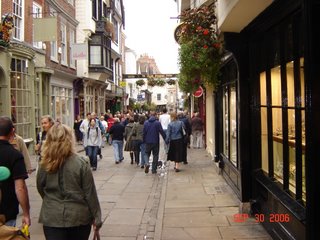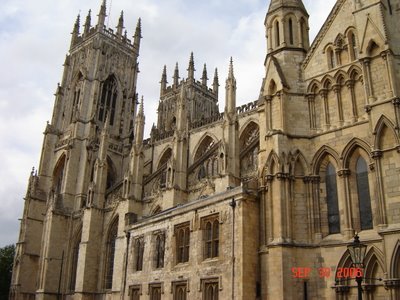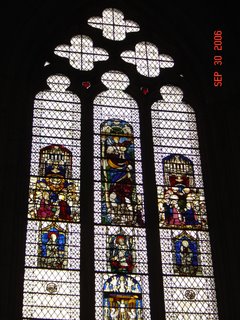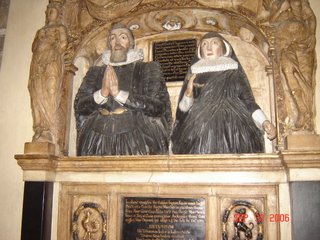Foundations upon Foundations
 The City of York -- beautiful, historic, crowded, stimulating! Here's an essay that Dennis wrote about our trip for the house newsletter, The Dalkeith Digest:
The City of York -- beautiful, historic, crowded, stimulating! Here's an essay that Dennis wrote about our trip for the house newsletter, The Dalkeith Digest:Foundations on Foundations
We just got back from York, one of the oldest settlements in


Standing in the archeological diggings beneath the huge cathedral of York Minster, the timelessness of history and the human need to define this timelessness with names struck me cold. In 1967 the present cathedral, built in the thirteenth century (1220 to 1350), needed substantial foundation repairs. During the excavation process, two previous foundations were discovered – one from the Norman era (around 1050): Jorvick and Yorrick; and an even deeper foundation and buried ruins from the Roman occupation from around the third century A.D.: Ebocorum. Although there has been a place of worship in the exact same area since the early 600’s, the excavators discovered that each of these churches was built upon the even earlier foundations of the Roman headquarters when Ebocorum was Rome’s northernmost outpost. Although scholars knew that the Romans had built large stone structures over the four hundred years or so that they occupied England, these new discoveries not only proved that the cathedral was built upon the physical remains of a previous neo-Christian culture (Constantine was proclaimed emperor in Ebocorum), but that the new Gothic Catholic cum Anglican Church of England was built on the physical remains of the Norman Roman Cathol ic church.
ic church.

Foundations upon foundations upon foundations. From a political military outpost, to the reflection of the greater glory of God, to the joining of the political and the spiritual to reflect Henry the VIII’s concept of the greater glory of God, the great edifice of York Minster represented at various times the deep cultural values of those who maintained it. But, it wasn’t until the spiritual, historical, and nationalistic values of the present compelled authorities to repair this magnificent symbol of



We learn what we allow history to teach us. In a reflective moment, I realized that York Minster’s story has deep metaphorical implications. When the strength of the cathedral’s great foundations came into question, both engineers and scholars dug into its past to discover not only the present problem, but the deeper long forgotten foundations of York Minster’s greatness as well. When we, ourselves, question the strength of our own foundations, we might do well to dig deeply into our depths to discover the forgotten connections that have quietly stood the test of time to help support the newer more visible values that might tumble in around us without the introspection and historical awareness of our deeper strengths, of who we are and what we might need to fix in order to continue on.

Like the man said: “If we don’t study history, we will be doomed to repeat it.” And what is introspection if not a study in our own personal history? Fortress or church, Roman Catholic or Anglican faith, York Minster cathedral remains a point of greatness because of its strong foundations and our willingness to repair them with an eye to the future. When we know and understand our own secret foundations we’ll be able to maintain our own basic strengths as we move forward into history.
--Dennis
The various images are of the inside of the church -- the medieval stained glass (all original), the ornate tombs, and the painted ceilings (can you imagine how colorful these places were when all the paint was fresh and bright?).


1 Comments:
Yeah, the building is just fantastic. It actually sent a shivver down my spine. So much history on so many levels.
As for the cow creamer: was it silver and appear to be stolen goods?
I can speak from experience re the pint-availability factor. We just happened to be in the city during the "food and drink" festival. Had plenty of both with a comely dollop of culture
djc
By Unknown, at 6:15 AM
Unknown, at 6:15 AM
Post a Comment
<< Home